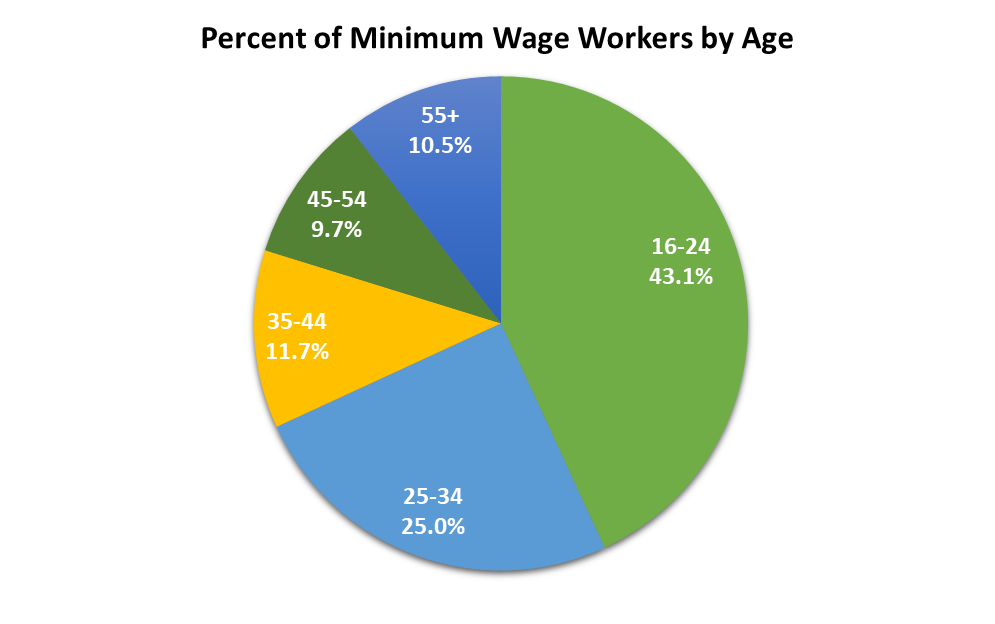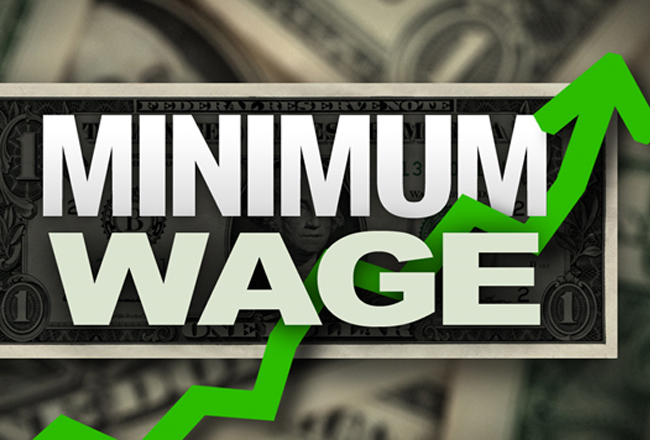For the millionth time or so, politicians have brought up minimum wage (MW) and ‘living wage’ (LW). So, I thought I’d address the entire issue of pay: what determines what someone earns for a given job performed? In effect, why do some folks make more or less than others? Let’s dig.
To begin with, a few terms need definition. MW is a government-mandated price floor for non-farm, non-family work. MW at a federal level began in the 1930s; individual States have since created their own MW laws, with the only caveat being they must be greater than the federal level. MW has increased over time, but according to some, not enough to keep up with inflation (assuming the original figure was valid). One thing is certain: MW is usually the going rate for entry level jobs, those requiring little or no skills. In effect, the common person on the street can be taught such a job with little or no training.

LW is a nebulous, completely undefined minimum wage level to maintain an undefined minimum lifestyle. LW is the politician’s friend, as it can be construed to be whatever they want at the time. Is it the total average cost of a 1BR apartment rental, plus average utilities cost, plus minimal food costs? Is it the estimated average cost of keeping a family of four alive? If you answered, “No one knows”, you’d be accurate. My accepted ‘minimum’ living standards may vary dramatically from yours. From a political standpoint, the only sure thing is that LW is greater than MW, and something to promise by people that do not pay it (the payers, businessmen, are never consulted on such things).
Government-mandated MW, along with government-paid Welfare, unemployment compensation, and ‘stimulus’ funds are exceptions to the normal determinates of wages: Supply and Demand. Under normal circumstances, the amount one is paid for a job is a strict function of Supply and Demand: if few people are qualified to perform a job that is in great Demand, the pay is greater. If more people can perform a job (higher Supply) than the number of jobs available (Demand), the pay is less—down to MW, in many cases. The higher pay of the in-Demand jobs is incentive for folks to become qualified to do them (training or education). Unions also bend the Supply/Demand equation by limiting the Supply to selected people (union members), resulting in higher than otherwise wages for those positions. Two things to note: 1. In areas where Demand exceeds Supply (see North Dakota), MW is irrelevant, as employers must pay much larger wages to attract the few workers in that region to accept their job; 2. REAL MW is ZERO—those that are unemployed due to the value of MW exceeding the value of job offerings (no employer hires anyone for anything at a loss).
Another factor influencing pay is regulatory and legal compliance. A company may hire an accounting firm to do their books. Such accounting functions are overhead—they do not increase sales or decrease costs. The company will continue to utilize the accounting firm until the cost of compliance exceeds the penalty for noncompliance.
Teachers pay is always a hot spot. Society generally regards teaching as a very valuable commodity, so why is their associated pay not higher than comparatively educated professions? Supply and Demand play a large role here, as in many cases, there are more folks qualified for the positions than there are positions available. Unions have an impact here also, as they may make removing less effective teachers from their positions, making new openings rare. Tenure, the ability to retain ones position after a certain number of years in service, has the same impact. Another factor is third-party payers. In many places, teaching salaries are paid by taxpayers, but negotiated by school boards.
Professional athletes are paid enormous salaries, compared to rank-and-file fans. But that Supply and Demand dynamic hits hardest here. The Supply of people that can perform those athletic skills number in the very few, yet many thousands of others WISH they had those skills. And the number of people that will pay to watch them perform establishes the high Demand. If the number of paying customers is not large (see professional soccer and professional Women’s basketball), downward pressure on salaries is evident. Note that the skill level is not relevant here, only the size of the ticket-buying customer base.
Officeholders’ pay is also an exception to Supply and Demand. They are paid via passed legislation, not by any assessed value of the office they hold. Some Congressmen work less than a third of the calendar year, yet get paid for a full year. This would likely be impossible, if the taxpayer had a direct say so.
A final point to consider: the size of unemployment compensation, Welfare compensation, and ‘stimulus’ payments, and their impacts on employment. None of these factors are based upon Supply and Demand. Instead, they are government assessed. If the payers (taxpayers) were consulted, the numbers may vary quite a bit. As is, the value and amounts of those three non-employed payouts may serve as a direct disincentive to work at all! If someone can get paid nearly as much (or more) to not work vs going to work, the results are obvious. Restaurants are closing these days, not due to a lack of paying customers, but due to a lack of staff. Many MW workers have decided that work is less pay than unemployment or ‘stimulus’ funds.
MW is a hot topic, as many politicians want to increase it from its current level of $7.25/hour to $15/hour. Again, note that businesses are not consulted in this endeavor. The ‘negotiation’ is a mandate from government (non-payers). There is no correlation between the value the MW employee provides to the employer and the amount the employee is paid. There isn’t even any consideration if the existing $7.25/hour is adequate for the employer. All discussion is directed to how much the employee should be paid, not how much he ‘earns’. Showing up for a job is hardly ‘earning’ the wages paid. Here’s an idea: let’s stop fooling around with low numbers! Let’s make MW a true LW, and make it $50/hour! If you said, “This would hammer the employers, increase unemployment, and cause incredible inflation!”, you’d be entirely correct. Think of the small business. As the total cost to employ increases, the store owner may decide to do things himself, rather than paying a large amount to hire someone else to do anything. Again, given the option, no employer hires anyone at a net loss. The alternative: raise prices enough to cover the increase in employee costs. Neither answer is a positive for anyone. Even the person getting the higher MW is now subject to much higher prices, so his net may not be the panacea expected. And the effect of the person that didn’t get hired? Yeah.
Thank you for taking the time to read my article! Feel free to add comments (good or bad) in the box below. In addition, there is a link at the bottom of the article to view other items I’ve written at Global Liberty Media. Enjoy!

























